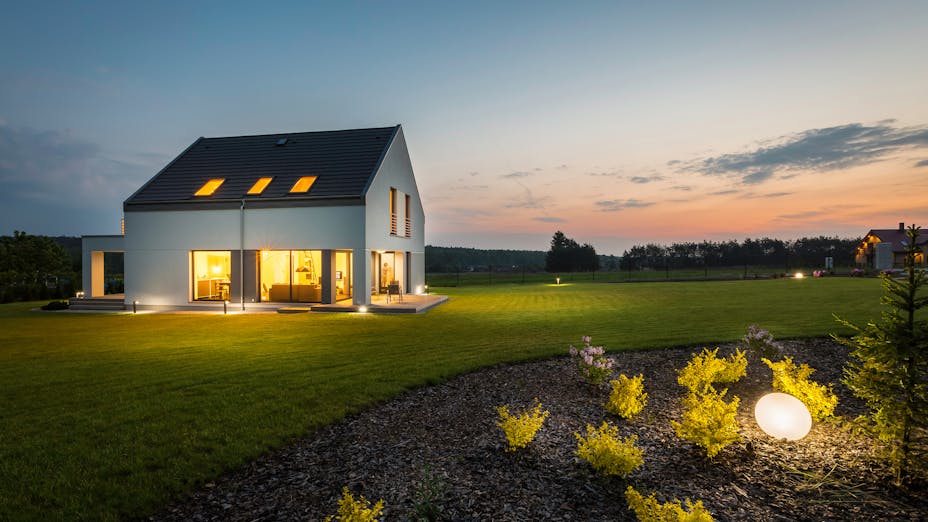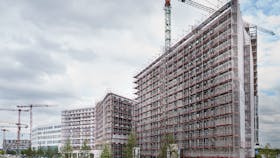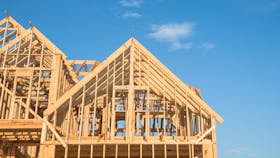Smart homes and buildings will play a vital role in humanity’s future. The spaces where people spend the majority of their time will increasingly rely on gadgets, sensors, and digital systems to manage their environments. The Internet of Things (IoT), mobile applications, and intelligent closed-loop controls allow smart homes and buildings to provide superior comfort and convenience to the inhabitants.
However, is a building or home still smart if it does not use all the technologies available to make it energy efficient? When someone thinks about energy efficiency in a smart home, they will consider switching off the lights and appliances automatically or being able to program the heating and cooling systems. A smart home’s insulation rarely springs to mind when the subject comes up in everyday conversations.
Designing the smartest home requires smarter insulation
With the environmental challenges the world’s population faces today, designers need to rethink what a smart home actually entails. While a programmable thermostat can maintain different temperatures in different rooms, it may require a large amount of energy to perform this task. Optimizing every space to reduce the conductive transfer of heat from the inside to the outside (or vice versa) will be vital for the thermal efficiency of the world’s smart cities and homes.
Temperature can influence cognitive abilities in different ways. Therefore, being able to control the climate in any room of a house or office is necessary to create a comfortable and productive environment. Thermal insulation may also help reduce the amount of energy poverty many households around the world experience.
In 2009, the US Department of Energy reported that the average household uses 90 million British thermal units (Btu) of heat per year. That is almost 95,000 megajoules and more than 26,000 kilowatt-hours. By 2015, the US Energy Information Administration reported that 51 percent of the energy used in homes went towards heating and cooling. Reducing this burden on the environment will require designers to incorporate the best available thermal insulation technologies that reduce the amount of energy used to maintain a conducive climate in homes.
Considering that nearly three-quarters of all energy humans produce ends up as waste heat, building designers will need to do better in the future. Heat retention and recovery may be one of the most effective strategies for reaching the 2 degrees Celsius goal required by the Paris Agreement.
Heat retention and recovery are essential for greener buildings
By now, humans need to understand that the economic models based on disposable consumption patterns will not sustain the urban populations of the future. The earth’s resources are finite, so managing consumption should be a primary concern for any government, municipality, business, or individual. Whenever humans do extract and convert resources into energy, using them efficiently and reducing heat waste will be critical.
Humanity is only now beginning to understand the real scope and urgency of the current climate crisis. Societies will need to look for sustainable solutions that support and protect their cities and populations in the future. Improving the thermal efficiency of the world’s buildings is a viable strategy for reducing waste and addressing the challenges everyone will face in the coming decades.
Improving the thermal efficiency of smart homes
Using the latest thermal retention solutions may help alleviate the burden on the environment and reduce the energy wasted in most buildings and homes. The second law of thermodynamics is indisputable. It is more efficient to maintain the temperature in a system (or home) if it is insulated from the external climate. Building designers did not appreciate just what benefits this natural process could bring to urban dwellings in the past.
Different insulation materials have different thermal retention characteristics (expressed as an R-value). The greater this value is for the insulation material of every wall, ceiling, or floor, the easier it is to maintain the temperature and therefore, reduce the amount of energy required for heating or cooling a particular space.
The better the insulation is in a building’s thermal design, the closer it comes to being a closed system and ultimately, the less energy waste it will generate. To achieve this, everything from the roof to the exterior requires effective thermal insulation. With the right insulation technologies, designers can improve their building’s thermal retention when designing new structures and during the renovation of an older home or apartment.
Insulating the smart buildings of the future
Renovating existing buildings for improved thermal efficiency may help achieve the United Nation’s Sustainable Development Goals (SDGs). In particular, the responsible production and consumption goal (SDG 12) will rely on improving the insulation technologies used in older generation structures. By 2030, the UN wants to achieve the sustainable and responsible management of the world’s natural resources across the globe. Therefore, it will become important to reduce energy consumption in existing buildings over the next ten years rather than designing and building new ones with this criterion in mind.
Most heat loss occurs through the roof of a building or home. By including effective insulation in attics or flat roofs, designers can reduce heat waste while also saving the occupants money. Heat will always attempt to move from a warmer to a cooler space, so insulating floors and basements can limit the conduction, convection, and radiation of thermal energy. For greater efficiency and comfort, using divider walls with cavity insulation can help designers to maintain optimal temperatures in various spaces.
Designers can utilise the latest insulation solutions for improved safety, convenience, health, and sustainability. Insulation materials can also improve fire safety within buildings. As a fire in any high-rise or dwelling presents a significant risk to human health, using materials such as stone wool that can resist up to 1,000 degrees Celsius will help protect the structure and its inhabitants from disaster.
The thermal efficiency of structures remains an untapped opportunity for building a sustainable future. When constructing a new building, or retrofitting a structure for improved efficiency, incorporating the capabilities and benefits of various types of smart home insulation technologies will have to be part of the overall design.






